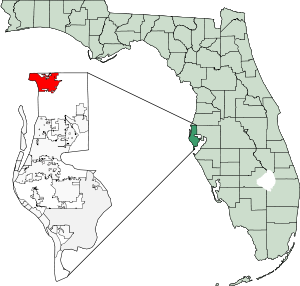
Race, as defined by the United States Census Bureau and the Federal Office of Management and Budget (OMB), is a self-identification data item in which residents choose the race or races with which they most closely identify. Race and ethnicity were considered separate and distinct identities, with Hispanic origin asked as a separate question. Thus, in addition to their race, all respondents are also categorized by membership in one of two ethnicities: Hispanic or Latino, and Not Hispanic or Latino. See Ethnicity (United States Census).
 Categories
CategoriesRace was asked differently in the Census 2000 in several ways than previously. Most significantly, respondents were given the option of selecting one or more race categories to indicate their racial identities. Data shows that nearly seven million Americans identified themselves as members of two or more races. Because of these changes, the Census 2000 data on race are not directly comparable with data from the 1990 census or earlier censuses. Caution must be used when interpreting changes in the racial composition of the U.S. population over time.
1. Is the person Spanish/Hispanic/Latino?
2. What is the person's race?
This census acknowledged that "race categories include both racial and national-origin groups."
The following definitions apply to the 2000 census only.

See also: White (people) and White American
See also: Pacific Islander
white
black
mulatto
white
black
mulatto
Chinese
Indian
No, not Spanish/Hispanic/Latino
Yes, Mexican, Mexican American, Chicano
Yes, Puerto Rican
Yes, Cuban
Yes, other Spanish/Hispanic/Latino (write in group)
White
Black or African American
American Indian or Alaska Native (write in tribe)
Asian Indian
Chinese
Filipino
Japanese
Korean
Vietnamese
Native Hawaiian
Guamanian or Chamorro
Samoan
Other Pacific Islander (write in race)
Other race (write in race)
The term White refers to people having origins in any of the original peoples of Europe, the Middle East, or North Africa." It includes people who indicate their race as "White" or report entries such as Irish, German, Italian, Persian, British, Assyrian, Iraqi, Near Easterner, Arab, or Polish.
"The term Black or African American refers to people having origins in any of the Black racial groups of Africa." It includes people who indicate their race as "Black, African Am., or Negro," or provide written entries such as African American, Afro American, Kenyan, Jamaican, Caribbean-American, Nigerian, or Haitian.
"American Indian and Alaska Native (AIAN) refer to people having origins in any of the original peoples of North and South America (including Central America), and who maintain tribal affiliation or community attachment."
"Asian refers to people having origins in any of the original peoples of the Far East, Southeast Asia, or the Indian subcontinent including, for example, Bangladesh, Cambodia, China, Pakistan, India, Japan, Korea, Malaysia, the Philippines, Taiwan, Thailand, and Vietnam. It includes "Asian Indian," "Chinese", "Filipino", "Korean", "Japanese", "Taiwanese", "Vietnamese", and "Other Asian".
"The term Native Hawaiian and Other Pacific Islander (NHPI) refers to a person having origins in any of the original peoples of Hawaii, Guam, Samoa, or other Pacific Islands. It includes people who indicate their race as "Native Hawaiian", "Guamanian or Chamorro", "Samoan", and "Other Pacific Islander."
Some other races includes all other responses not included in the "White", "Black or African American", "American Indian and Alaska Native", "Asian" and "Native Hawaiian and Other Pacific Islander" race categories described above.
Two or more races refers to multiracial people. People may have chosen to provide two or more races either by checking two or more race response check boxes, by providing multiple write-in responses, or by some combination of check boxes and write-in responses.
No comments:
Post a Comment